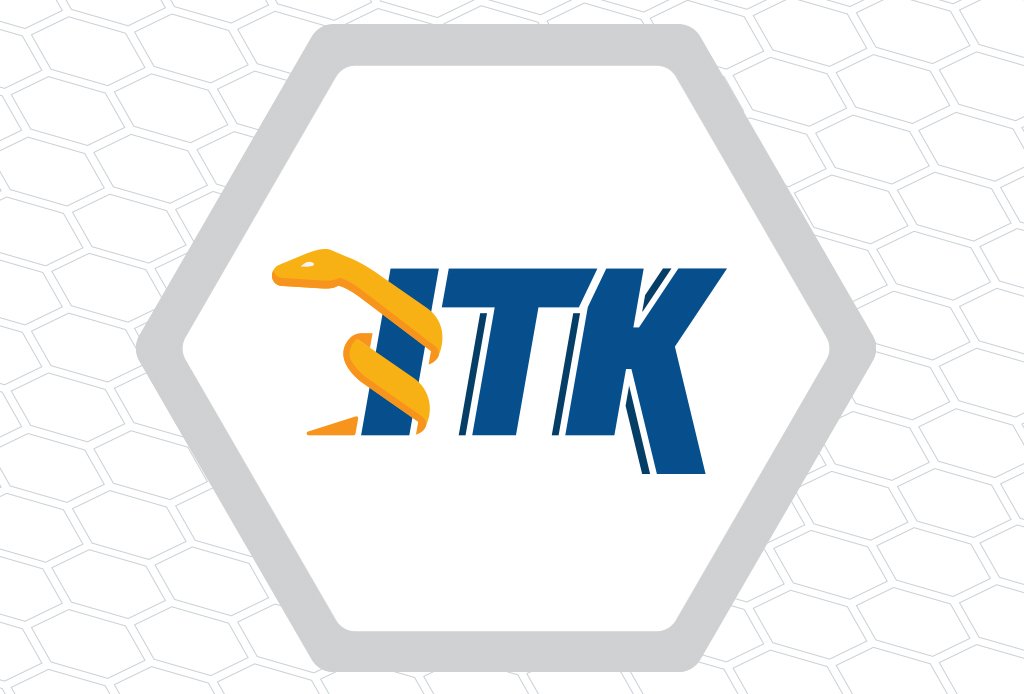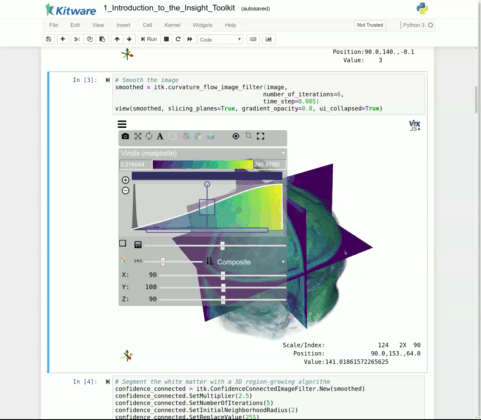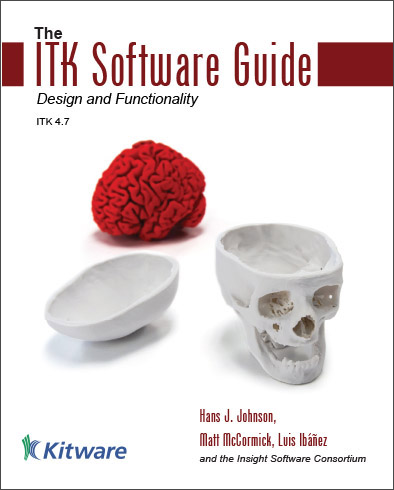Courses in Image Analysis that use ITK

Post last updated: October 24th, 2019.
The Insight Toolkit (ITK) is not only a foundation for the practice of image analysis in industry and academia; ITK has been studied and used to demonstrate principles of scientific and medical image analysis in many university courses around the world.
If you are not able to attend Kitware’s annual free course on Biomedical Image Analysis and Visualization in person, the online, interactive series of Jupyter Notebooks are a good place to start. Kitware also offers periodic and onsite training.
When learning ITK, The ITK Software Guide is also an excellent reference.
Moreover, the following courses provide additional opportunities for students attending institutes for higher education. Course descriptions are provided along with links to publicly available course materials.
- The University of Iowa-Medical Image Analysis course is semester-long course taught by Hans Johnson. It is an excellent introduction to medical image analysis and ITK. The course covers the architecture of ITK, programming with ITK, medical image representation, filtering, affine registration, and deformable registration with Demons and b-splines. Powerpoint files of the lectures are available.
- A long-running Methods in Medical Image Analysis course from John Galeotti at Carnegie-Mellon has both lecture Powerpoints and high quality video recordings of the lectures available. Its purpose, from its syllabus, is “to gain theoretical and practical skills in medical image analysis, including skills relevant to general image analysis. The fundamentals of computational medical image analysis will be explored, leading to current research in applying geometry and statistics to segmentation, registration, visualization, and image understanding. Student will develop practical experience through projects using the new v4 of the National Library of Medicine Insight Toolkit (ITK), a popular open-source software library developed by a consortium of institutions including Carnegie Mellon University and the University of Pittsburgh.”
- The University of Pennsylvania, Center for Biomedical Image Computing and Analytics has made available the presentations and code from a seminar series on “CPP for Image Processing and Machine Learning.” The tutorial intends to help someone with a good theoretical background in image processing and machine learning quickly prototype algorithms using C++ and extend them to create meaningful software packages
- This Imperial College London-Medical Image Analysis course, taught by Prof. Daniel Rueckert and Dr. Ben Glocker, aims to provide MSc students with the necessary skills to carry out research in medical image computing: visualisation, image processing, registration, segmentation and machine learning.
- A Medical Image Computing course at the University of Central Florida covers the basics of radiological image modalities and their clinical use, an introduction to medical image computing and toolkits, image filtering, enhancement, noise reduction, and signal processing, medical image registration, medical image segmentation, medical image visualization, shape modeling/analysis of medical images, machine learning/deep learning in medical imaging, neuroimaging: fMRI, DTI, MRI, and connectome imaging.
- An Image Registration course at the Rensselaer Polytechnic Institute (RPI) covers all aspects of image registration, including the underlying mathematics, the images themselves, algorithms, implementations, and applications. Applications range from medical imaging to automatic geometric modeling. Special emphasis is given to software toolkits for image registration.
- The Computer Assisted Image Analysis course at Uppsala University gives an introduction to the processing and analysis of digital images, covering: pointwise image operators, local image operators, Fourier analysis of images, mathematical morphology and distance transforms, image segmentation, object description, classification, color images and image compression, and applications of image analysis.
- An Advanced Image Processing and Analysis course at Western University explores a few major areas of digital image processing at an advanced level, with primary emphasis on medical applications. Topics covered include image segmentation, image registration, validation of image processing algorithms, and image processing using 3D Slicer and the Insight Toolkit (ITK). Examples will be presented to give the students exposure to real-world applications.
- Multimedia Analysis taught at the University of Singapore aims to provide a comprehensive and rigorous treatment of the main approaches in multimedia (document, image, video, graphics) analysis.
- Image Processing at the University of Utah is an introductory course in processing gray-scale and color images taught at the graduate level. This course covers both mathematical fundamentals and implementation.
- A Digital and Medical Image Processing course at Simon Fraser University develops signal processing techniques of wide applicability, presented in the context of processing and analysis of digital images, in particular 2D and 3D biomedical images. Covers acquisition, formation and representation of digital images, filtering, enhancement and restoration in both spatial and frequency domains, image segmentation, image registration, and discrete image transforms.
- Medical Image Science: Applications at the University of Wisconsin-Madison presents the application of medical imaging theory to problems in medical imaging science including: concepts of digital image processing, image reconstruction/compression, point response function analysis, noise characteristics, and measurement.
- A Digital Image Processing course at Columbia University introduces fundamental technologies for digital image and video representation, compression, analysis, and processing. Students will gain understanding of algorithm and system design, analytical tools, and practical implementations of various digital image applications.
- The Applied Medical Image Analysis course at Old Dominion University explores hands-on exposure to state-of-the-art algorithms in medical image analysis, which builds on open-source software (Insight Segmentation and Registration Toolkit – ITK), as well as the principles of medical image acquisition in the modalities of clinical interest. Medical imaging modalities – X-rays, CT, and MRI/ITK image pipeline; image enhancement, feature detection; segmentation – basic techniques, feature-based classification and clustering, graph cuts, active contour and surface models; surface and volume meshing; registration – transformations, similarity criteria; shape and appearance models are all explored and discussed in this course.
- Medical Image Processing at the University of Massachusetts-Lowell focuses on post-acquisition medical image processing. We will cover techniques for processing n-d medical images. There will be an engineering emphasis rather than rigorous investigation of algorithms and theory. There will be homework or projects that will require use of software tools such as ImageJ (for fundamentals), Matlab or ITK (for filtering) and Mimics (for segmentation).
- The Introduction to Pattern Recognition at Technische Fakultat course covers the Fourier Transform, Fourier Series, k-Means clustering, histogram equalization, image filtering, threshold, edge detection, simple segmentation, morphological operations, normalization, walsh transform, wavelets, eigenfaces.
Programming for Medical Imaging at Utrecht University is a course that teaches the theoretical knowledge and practical skills required for medical imaging. The focus is on C++ and Python. - An Introduction to Image Processing at Karabuk University aims to Cover basic theory and algorithms widely used in image processing, develop hands-on experience in processing images, familiarize with OpenCV (Open Source Computer Vision) library, and develop critical thinking about the state of the art.
- Biomedical Imaging and Analysis at Sun Yat-sen course’s goals are to familiarize students with biological and medical imaging data from various imaging modalities (eg: Magnetic Resonance Imaging (MRI), X-ray Computed Tomography (CT), Fluoroscopy, Ultrasound and Optical Systems for Microscopy), how these data are acquired as well as how to process 2D, 3D and 4D (3D + time) data for quantification and visualization purposes using contemporary software tools and open-source libraries (including, SimpleITK, ITK, VTK).
- The National Technical University of Athens offers an Introduction to Biomedical Engineering, Biological Signal Analysis, and Processing whose lectures include methods and processing techniques, design and implementation of digital filters together with specific applications.
- An Image Registration course at National Chung Cheng University helps students determine the mapping between two images of the same object, similar objects, the same region or similar regions Image registration is the process of determining the spatial transform that maps points from one image to homologous points on an object in the second image.
- Professor Owen Carmichael provided video recordings from his course on Image Processing and Analysis. This course deals with techniques for automated extraction of high-level information from images generated by cameras, three-dimensional surface sensors, and medical devices.


Wow! the breadth of the courses offered is amazing!
This post is brilliant! Very helpful resources, thank you so much.